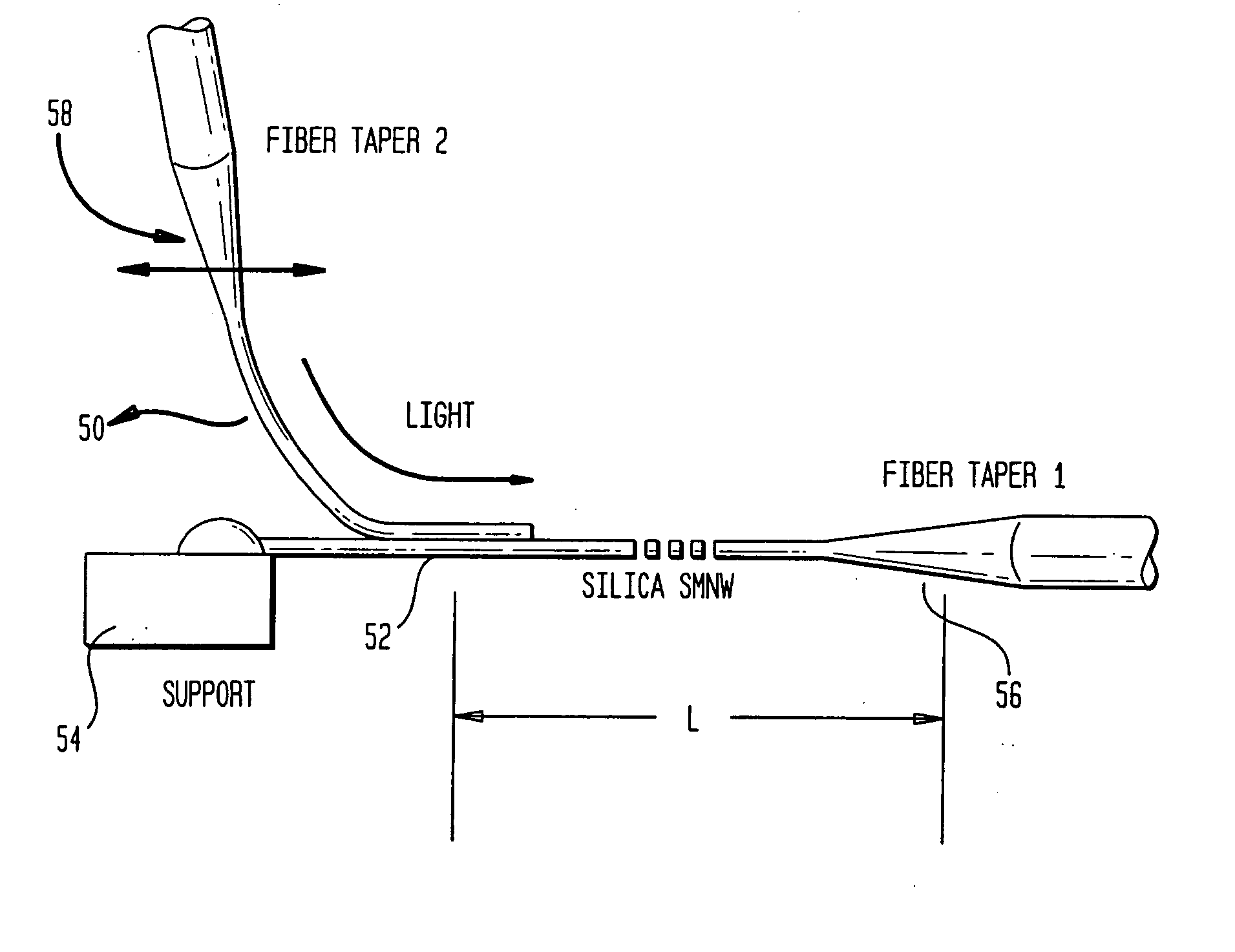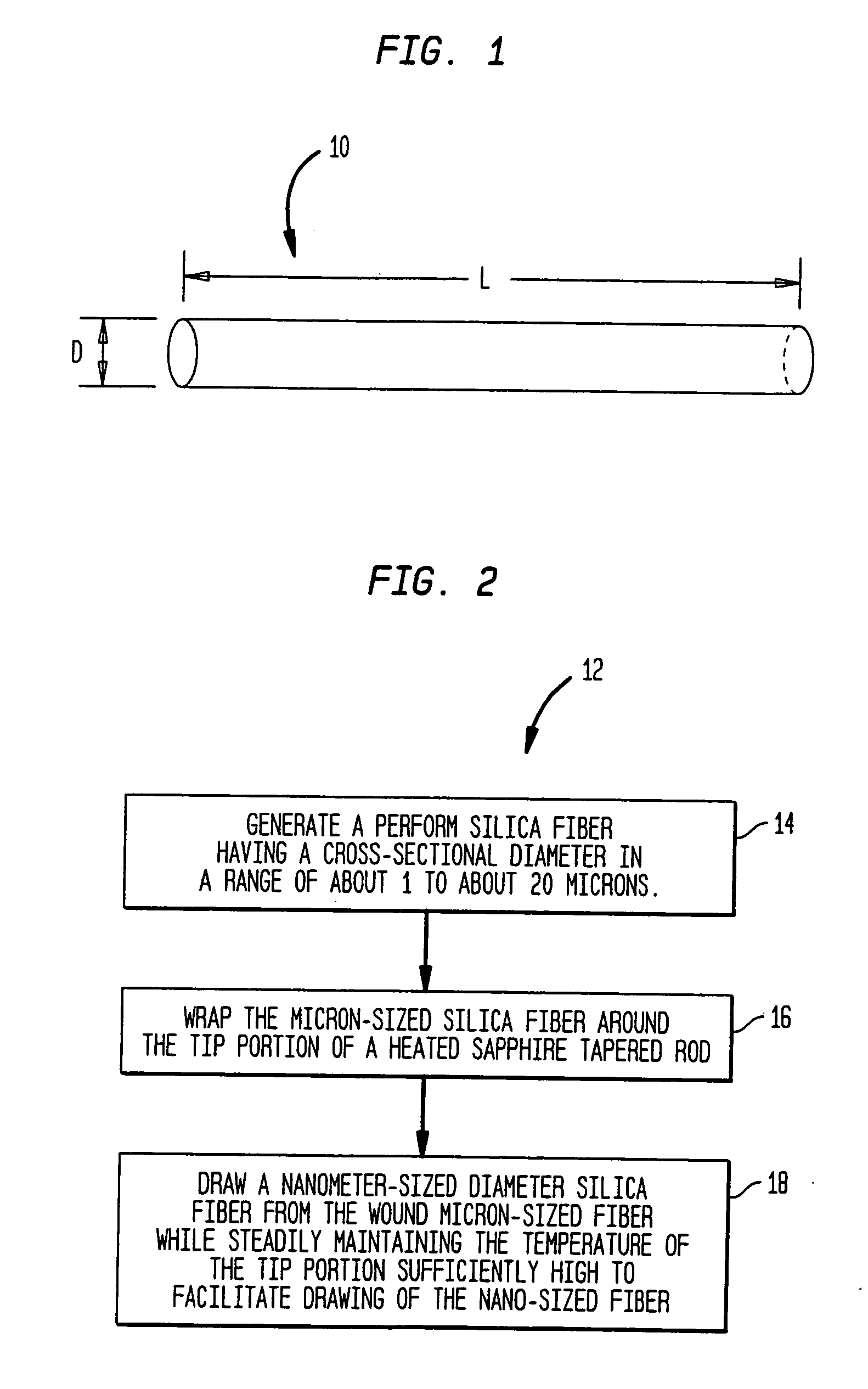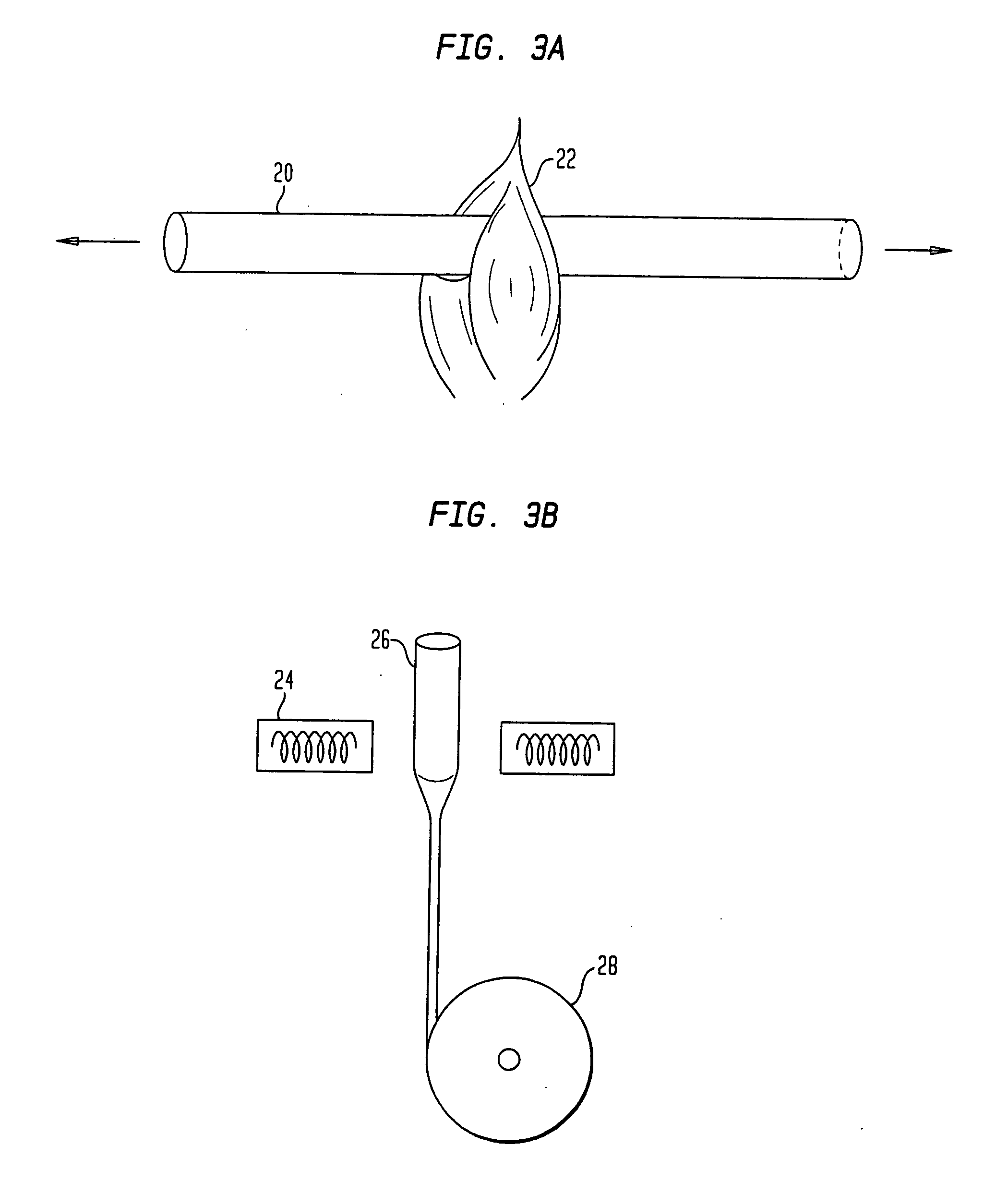Subwavelength-diameter silica wires for low-loss optical waveguiding
a technology of optical waveguided wires and subwavelength diameters, which is applied in the manufacture of instruments, cladded optical fibres, manufacturing tools, etc., can solve the problems of difficult to draw smnws with uniform diameters, impractical laser power requirements, and difficult to manufacture such silica wires, etc., to achieve the effect of softening the fiber portion
- Summary
- Abstract
- Description
- Claims
- Application Information
AI Technical Summary
Benefits of technology
Problems solved by technology
Method used
Image
Examples
Embodiment Construction
[0064] The present invention provides nanometer-sized diameter silica fibers, and methods for their production, that exhibit a high uniformity in diameter size along the fiber's length as well as a highly smooth surface with a root mean square roughness that can be less than about 0.5 nm. As discussed in more detail below, an exemplary method of the invention for generating such silica fibers utilizes a process in which a silica fiber preform having a micrometer-sized diameter is thermally coupled to a portion of a support element. The support element is heated so as to maintain the fiber at a temperature that allows drawing the preform in a subsequent step to form a nanometer-sized diameter silica fiber.
[0065]FIG. 1 schematically depicts an exemplary silica fiber 10, formed in accordance with the teachings of the invention, that exhibits a cross-sectional diameter D with a value in a range of about 50 nm to about 1100 nm, or in some preferred embodiments in a range of about 20 nm ...
PUM
| Property | Measurement | Unit |
|---|---|---|
| Length | aaaaa | aaaaa |
| Diameter | aaaaa | aaaaa |
| Diameter | aaaaa | aaaaa |
Abstract
Description
Claims
Application Information
 Login to View More
Login to View More - R&D Engineer
- R&D Manager
- IP Professional
- Industry Leading Data Capabilities
- Powerful AI technology
- Patent DNA Extraction
Browse by: Latest US Patents, China's latest patents, Technical Efficacy Thesaurus, Application Domain, Technology Topic, Popular Technical Reports.
© 2024 PatSnap. All rights reserved.Legal|Privacy policy|Modern Slavery Act Transparency Statement|Sitemap|About US| Contact US: help@patsnap.com










